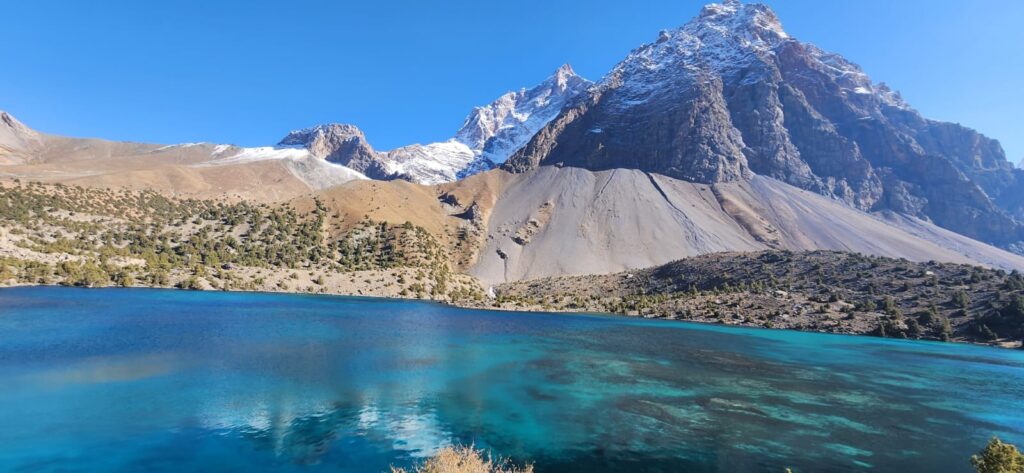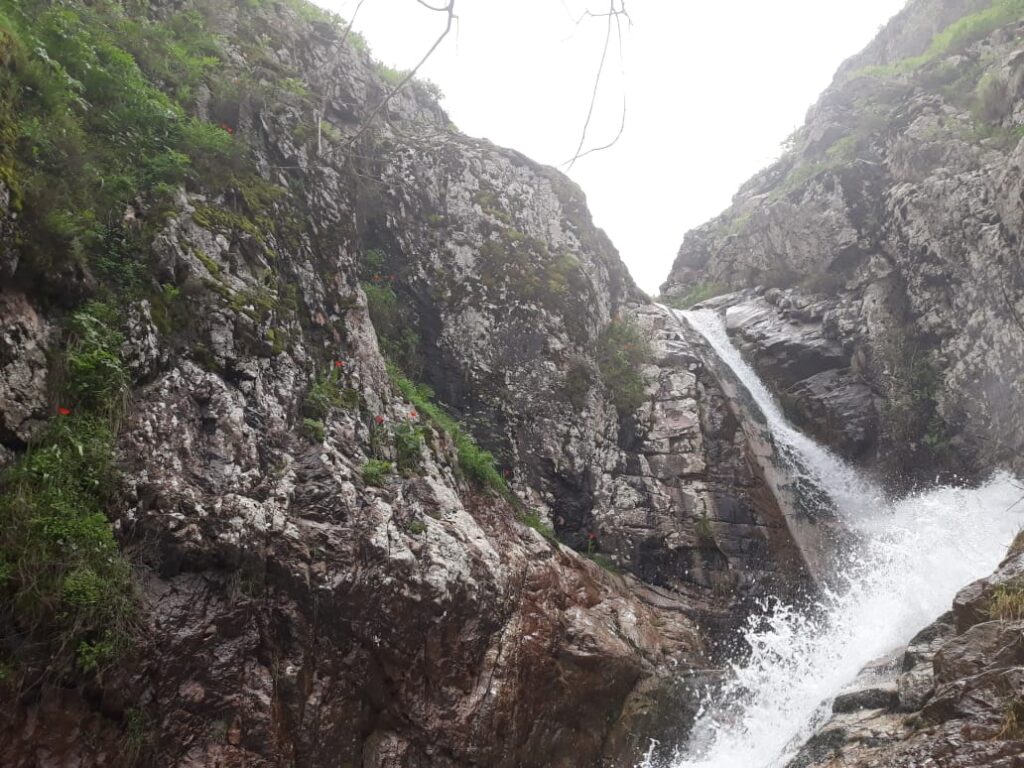In the mountain valleys of Tajikistan, migration is often imagined as a social phenomenon: people moving for work, education, or opportunity. Yet in many villages, movement is increasingly shaped not by choice but by shifting land and water. Climate change alters hydrological patterns, accelerates erosion, and destabilizes slopes, gradually pushing communities to relocate. This is climate migration in its geographic sense: not a single dramatic event but a series of environmental pressures that make old settlements untenable.
Tajikistan’s topography is steep and dynamic. Over ninety percent of the country is mountainous, and many villages are perched on narrow terraces along rivers or tucked into alluvial fans where mountain streams meet valley floors. These locations, chosen historically for their access to water and cultivable land, are also zones of high geomorphological activity. Floods, landslides, mudflows, and rockfalls occur frequently, and their patterns are changing. Warmer winters bring more rain than snow, increasing runoff and triggering slope failures earlier in the season. Glaciers retreat and seasonal snowmelt shifts, altering river regimes. For communities living at the margins of these processes, geography itself begins to move beneath their feet.
One example lies in the upper Vakhsh Valley, where several villages have relocated since the 2000s due to recurrent flooding and bank erosion. The Vakhsh River, fed by glacial melt and snowmelt from the Pamirs, has experienced both increased peak flows and shifting channels. Satellite imagery shows how the river’s braided sections have migrated laterally, undercutting terraces where houses and fields once stood. What used to be stable land has become floodplain. “The river came closer each year,” said a resident of one village that moved to higher ground in 2013. “First it took the fields, then the road, then it began to eat the houses.”
Geography dictates habitability in these mountain valleys. A few meters of channel migration, a shift in seasonal flow, or a slope failure can turn a viable village site into a risk zone. Migration is less a decision than a response to terrain that is itself changing.
Hazards in Tajikistan are tightly linked to elevation, slope, and hydrology. Many villages occupy mid-altitude zones where rivers exit narrow gorges and spread sediment, forming temporary flatlands. These are fertile areas for agriculture but geomorphologically unstable. Alluvial fans are built by periodic floods and debris flows; when extreme events occur, they can rapidly rework the surface. In recent decades, warmer temperatures have altered snow accumulation and melt timing, producing earlier and sometimes more intense spring floods. Rain-on-snow events, once rare, are becoming more common, increasing runoff in steep catchments. These hydrological shifts correspond with an increase in observed landslides and flood events in several districts, including Rasht, GBAO, and Khatlon (Ehlers et al., 2015).
Villages affected by these processes often relocate short distances: moving to higher terraces or adjacent slopes rather than abandoning the region entirely. Government programs sometimes support these relocations, identifying safer terrain through geomorphological surveys and hazard assessments. Criteria typically include slope stability, distance from river channels, access to water, and proximity to roads. The new sites are chosen with a different understanding of risk than earlier generations had, reflecting updated knowledge of climate-related changes in hazard frequency and intensity.
In the Rasht Valley, a cluster of households moved uphill after repeated mudflows destroyed irrigation systems and damaged homes. The mudflows originated from thawing permafrost zones high in the catchment, where warming temperatures destabilized ice-rich soils. Each summer, intense rainfall triggered flows that swept down the valley. Initial efforts focused on building check dams and diversion channels, but as events became more frequent, relocation emerged as the only sustainable option. Survey teams marked a site on a nearby ridge with lower slope angles and more stable bedrock. Over two years, families gradually built new homes there, leaving behind the damaged lower terraces.
From a geographic perspective, this kind of migration represents a shift in human settlement patterns in response to evolving physical landscapes. Unlike sudden disaster displacement, these moves are planned but compelled by environmental change. The physical drivers are measurable: increased river discharge variability, slope instability, and altered permafrost dynamics. Their effects manifest unevenly across Tajikistan, depending on local topography, geology, and hydrology. Southern lowlands face increasing drought stress, while high mountain valleys experience intensified floods and landslides.
Climate migration in Tajikistan does not follow a single narrative. In some valleys, rivers erode terraces from below; in others, slopes fail from above. In some places, drought pushes communities toward more reliable water sources; in others, floods drive them away from rivers. Geography determines which processes dominate and how they combine to make certain places less livable.
Scientific studies have documented these changes. Hydrological records show earlier spring peaks and declining late-summer flows in many glacier-fed rivers (Aizen et al., 2007; Kayumov, 2010). Regional inventories and case studies from the Pamir–Tien Shan prior to 2019 report more frequent slope instabilities in thaw-affected periglacial belts and after warm, wet summers (Stoffel & Huggel, 2012; Sorg et al., 2012; Marchenko et al., 2007). Remote sensing data shows that some alluvial fans in southern Tajikistan have experienced renewed sediment deposition, reshaping channels and inundating agricultural lands. These findings corroborate local observations, though often the latter detect shifts earlier than formal monitoring does.
Migration decisions also intersect with infrastructure. Roads, schools, and irrigation systems anchor communities in place; when these are damaged repeatedly, relocation becomes both necessary and logistically challenging. Some families move individually, others collectively. Geographic isolation compounds difficulties: high valleys accessible only by single roads face longer recovery times after each hazard event, increasing pressure to move permanently.
In Khatlon, lowland villages respond differently. Here, drought and groundwater decline push farmers to move toward areas with more reliable irrigation, often at the margins of existing settlements. This is a slower, more diffuse migration, shaped by soil moisture gradients and canal hierarchies rather than sudden hazard events. Fields abandoned due to salinization or water shortage leave visible traces such as white crusts on the soil, unused irrigation gates, collapsing field boundaries. These too are forms of climate-induced geographic change, though less dramatic than landslide-triggered relocations.
Standing in a newly established village on a rocky terrace above a former floodplain, the view makes the logic clear. Below, the old houses lie cracked and half-buried in sediment; the river glints between shifting gravel bars. Above, the ground feels solid underfoot, and survey markers outline plots for new homes. A man points to the channel below and says simply, “The river wanted that land back.” His words express what geomorphology shows in maps and cross-sections: the physical landscape is dynamic, and human settlements must adapt to its changing contours.
References
- Aizen, V. B., Aizen, E. M., & Melack, J. M. (2007). Glacier meltwater and runoff in the Pamir-Alai and Tien Shan. Journal of Hydrology, 332(1–2), 1–21.
- Ehlers, E., Kreutzmann, H., & Obertreis, J. (2015). High Mountain Environments and Human Communities in Central Asia. Springer.
- Kayumov, A. (2010). Climate change impact on water resources in Tajikistan. Dushanbe: Tajik Hydromet.
- Sorg, A., Bolch, T., Stoffel, M., Solomina, O., & Beniston, M. (2012). Climate change impacts on glaciers and runoff in Central Asia. Nature Climate Change, 2(10), 725–731.
- Marchenko, S. S., Gorbunov, A. P., & Romanovsky, V. E. (2007). Permafrost warming in the Tien Shan Mountains, Central Asia. Global and Planetary Change, 56(3–4), 311–327.
- Stoffel, M., & Huggel, C. (2012). Effects of climate change on mass movements in mountain environments. Progress in Physical Geography, 36(3), 421–439.








